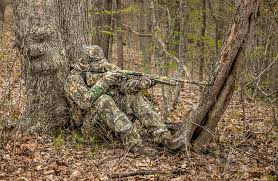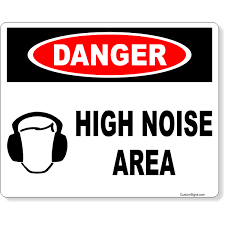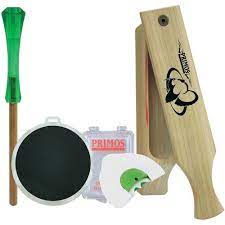5 Tips To Make Your Turkey Hunting Set Up More Effective
- inthaloop1
- Mar 21, 2023
- 5 min read
Updated: Mar 29, 2023
Turkey hunting can be a challenging but rewarding experience. If you want to improve your chances of success, there are a few things you can do to set yourself up for success. In this blog post, we will share 5 tips to make your turkey hunting setup more effective. While some of these tips may seem obvious, they are often overlooked or forgotten. .
By following these tips, you will be better prepared to harvest a turkey this season.
1. Use decoys to attract turkeys to your position.
2. camouflage yourself and your equipment.
3. avoid hunting in areas where there is a lot of human activity.
4. make sure you have good calls.
5. be patient and wait for the right opportunity.
By following these tips, you will improve your chances of success this turkey hunting season.
Let's go into more detail about each of these tips:
1. Use decoys to attract turkeys to your position:
Decoys can be invaluable for bringing turkeys within range. A realistic and well-placed decoy can draw in curious birds while you remain concealed. Make sure to use decoys that match the species, sex, and age of the turkeys in your area.

Here are some tips for using decoys effectively: a. Use a realistic decoy: The more lifelike your turkey decoy looks, the more likely it is to attract real turkeys. Choose a decoy that is well-made, with realistic colors and details, and that has a natural posture and pose.
b. Place decoys strategically: Think about the natural movements and behaviors of turkeys, and position your decoys where they will be visible and attractive to approaching birds. You may want to place a hen decoy near a feeding area or near cover or set up a strutting tom decoy to draw in a dominant male.
c. Consider wind direction: Turkeys have a keen sense of smell, so make sure your decoy is placed downwind from where you'll be hiding. This will help keep your scent from spooking the birds and make it more likely that they'll investigate the decoy.
d. Be patient: Don't expect turkeys to immediately rush over to your decoy as soon as they see it. Sometimes it takes a while for them to become interested and start approaching. Stay still, be patient, and wait for them to come to you.
e. Use a variety of decoys: If you're hunting in an area with a mix of male and female turkeys, consider using a combination of decoys to mimic a flock. This can make it more likely that birds will come in to investigate, and provide you with more opportunities to take a shot.
Remember to follow all safety guidelines when using decoys, and always practice good ethical hunting practices. With the right decoys and a little patience, you can increase your chances of bringing in a turkey this season.
2. Camouflage yourself and your equipment:
Blend in with your surroundings by wearing camo clothing and using camo gear. Cover exposed skin and reduce any shiny surfaces on your equipment. This will help you blend in and avoid detection.

Additionally, be aware of your movement and positioning. Avoid sudden or erratic movements and stay low to the ground to avoid attracting attention. Use natural cover such as bushes or trees to your advantage and avoid silhouetting yourself against the sky.

Remember to also be aware of the wind direction and avoid making noise as much as possible. By being mindful of your surroundings and taking the necessary steps to blend in, you can increase your chances of remaining undetected while outdoors.
3. Avoid hunting in areas where there is a lot of human activity:
Turkeys are sensitive to human activity and will typically avoid areas where people are frequently present. Hunting in remote or less visited areas can improve your odds of success.

Additionally, turkeys have excellent eyesight and hearing, so it's essential to be quiet and still while hunting them. It's also crucial to wear camouflage to blend in with your surroundings and avoid making sudden movements. Calling with turkey calls can also be effective in attracting them to your location. However, it's important to practice proper safety measures when using hunting equipment and always follow local hunting regulations.
4. Make sure you have a good call:
A turkey call is essential for luring birds to your location. Learn to effectively use different calls such as yelps, clucks, purrs, and gobbles. Practice calling until you are confident in your abilities, as even minor mistakes can scare away wary birds.

There are different types of turkey calls, such as mouth calls, box calls, slate calls, and diaphragm calls. Each type requires a different level of expertise to master.
Here are some tips to help you improve your turkey-calling skills:
a. Start with the basics: The most common call to start with is the yelp call. The yelp is a basic communication call that turkeys use to stay in touch with each other. It is often used to locate turkeys and to get their attention.
b. Listen and learn: Spend time in the woods listening to wild turkeys. This will help you learn their vocalizations and identify the different types of calls they make.
c. Practice, practice, practice: Set aside some time each day to practice your calls. Start with basic calls like the yelp, and then move on to more advanced calls like the purr, cluck, and gobble.
d. Use the right call at the right time: The more you understand turkey behavior, the better you can choose the right call for the situation. For example, a soft purr call may work better early in the season when turkeys are less responsive. Alternatively, a loud gobble may work better later in the season when gobblers are more aggressive.
e. Be patient: Calling turkeys can be a frustrating process, and it may take some time before you get the results you want. Don't get discouraged if you don't get a response right away. Keep practicing your calls and be persistent.

5. Be patient and wait for the right opportunity:
Turkeys are cautious and often require persistence and patience to successfully hunt. Wait for an opportunity to take a clear and ethical shot, and avoid the urge to rush or take risky shots.
In addition, it is important to be familiar with turkey behavior and habits, and to use appropriate calling techniques to attract them. Ensure that you are properly camouflaged and follow all safety guidelines when hunting. Respect the animal and its environment, and always practice responsible hunting practices.

By following these tips and planning, you’ll be better equipped to have a successful turkey hunting trip. Remember to be safe, practice ethical hunting, and enjoy your time in the field!




Comments